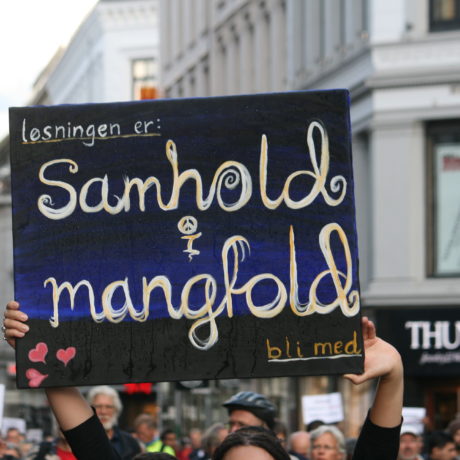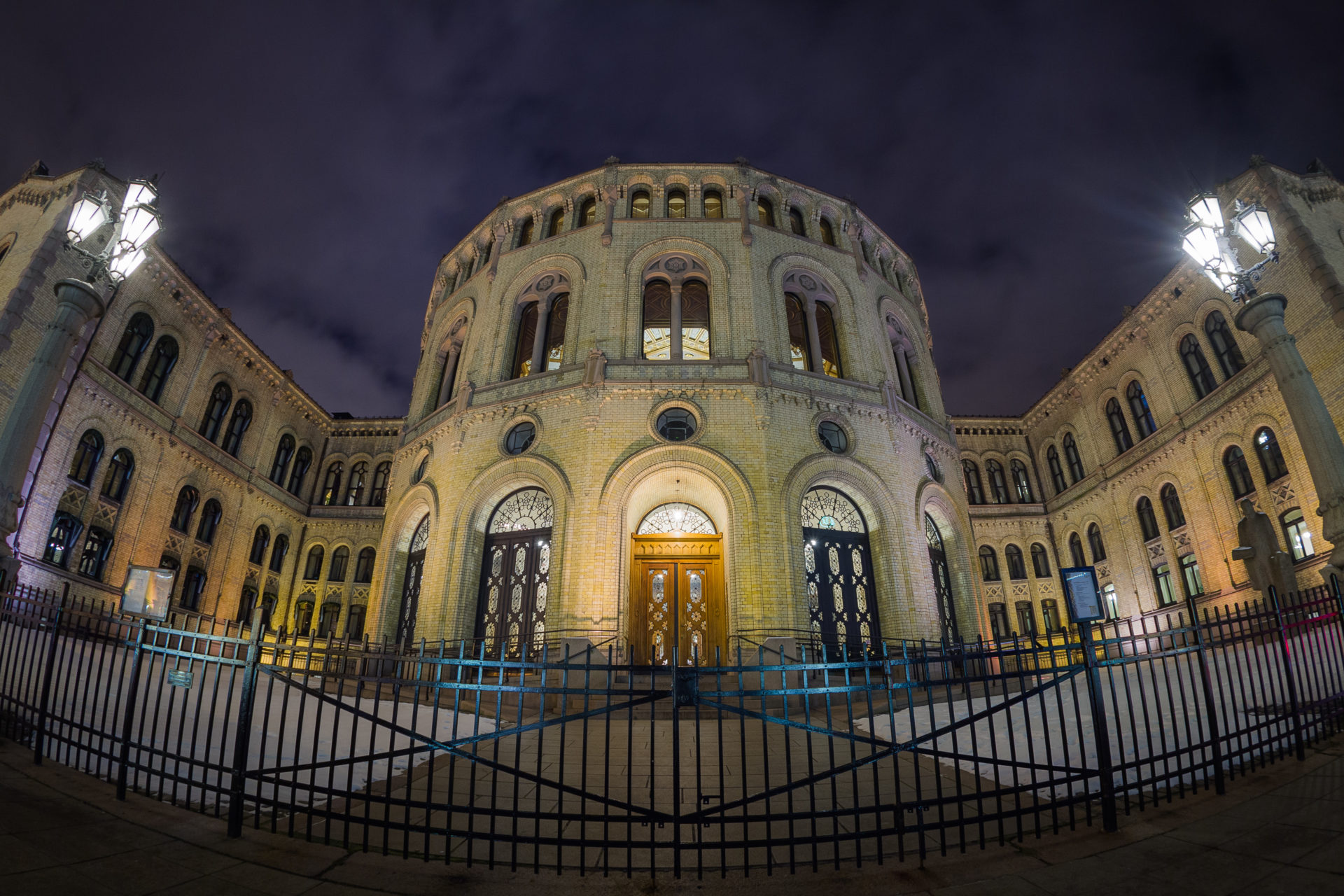
Norway
- Governance: Unitary parliamentary, constitutional monarchy
- Capital: Oslo
- Population: 5.5 million
- Religion: Protestant Christianity
- Language: Norwegian
- Location: Northern Europe
- Democracy index: Free, 100/100
Norway borders on Russia, Finland and Sweden in the east. Otherwise, the country is surrounded by sea with the world’s second longest coastline of over 100,000 km, including fjords, islands and sheaves. There are about 5.5 million people living in Norway; about 750,000 of them being immigrants. Norway has a Sami population containing a status as indigenous peoples and five national minorities (Jews, Kvens/Norwegian Finns, Roma, Romani/Taters, and Forest Finns).
The ties between state and church have become weaker, but still the church is financed by the state. However, other religious and philosophical communities receive similar support. The Norwegian Constitution of 1814 is the world’s second oldest. It has been amended several times, including in 2014 when a chapter on human rights was added. Norway also has a Human Rights Act from 1999.
Norway today
Norway is a parliamentary, democratic and central constitutional monarchy. The parliament has 169 representatives, chosen in a proportional electoral system. The Government remains in power based on parliamentary majority, not expressing a vote of mistrust (“negative parliamentarism”). Civil society plays a prominent role through consultations on legislative proposals and policies and through lobbying.
There are several institutions that protect human rights, such as The Parliamentary Ombudsman (established in 1962), The Equality and Anti-Discrimination Ombudsman (1979) and The Ombudsman for Children (1981). Norway established a National Institution for Human Rights in 2001, which was re–established in 2015. The Parliamentary Ombudsman is Norway’s national preventive mechanism against torture.
NHC
The Committee has been involved in human rights work in Norway since 1977, including on minority rights, freedom of religion or belief, asylum and refugee rights, human rights of prisoners and arrestees, strengthening human rights in Norwegian law, promoting strong institutions that protect human rights, and on ratification of international treaties.
The Committee has a special commitment to the situation of the Romani people/Taters, who were exposed to tough assimilation policies up to the 1980s. It is also active in education on human rights.
The Norwegian Helsinki Committee acts as a secretariat for the NGO Forum for Human Rights, which is a group of over 40 organizations that influence Norwegian human rights policies. The NGO Forum, among other things, makes alternative reports to some of the UN human rights agencies.
The Committee participates in several cooperative bodies, advisory committees, consultations and in meetings with international surveillance bodies visiting Norway. It runs a project to promote cooperation between organizations in Eastern EU member states and Norwegian organizations.
History
The Norwegian state dates to the Viking era, 800-1050. In the 1100s, a period of internal conflict (“the civil war period”) began, while the 1300s were characterized by crisis that weakened the state. Norway was ruled by Denmark from 1536. Between 1814-1905, this Danish rule was replaced by a union with Sweden.
When Norway became independent in 1905, the country was characterized by economic development and industrialization. Natural resources such as hydropower, fish and minerals were important prerequisites. In the post-war period, Norway got a whole new industry related to oil and gas. Norway became a member of the Council of Europe and NATO in 1949. There were advisory referendums on membership in the EU in 1972 and in 1994, both of which ended with a majority against membership. Norway is nevertheless linked to the EU through the EEA Agreement.






Timeline
- 800-1050: The Viking Age where Norwegians went on plundering missions abroad.
- About 900: Norway united to one kingdom.
- 1030: Introduction of Catholic Christianity.
- 1536: Norway becomes a Danish province and Lutheran Protestantism replaces Catholicism.
- 1814-1905: Union with Sweden.
- 1905: The Storting (Norwegian Parliament) proclaims independence from Sweden. Prince Carl of Denmark is elected king and takes the name of King Haakon VII.
- 1913: Women are entitled to vote.
- 1914: Norway, Sweden and Denmark agree to remain neutral during World War I.
- 1920: Norway joins the League of Nations.
- 1940-45: Norway occupied by Germany.
- 1945: Member of the United Nations. Voted in favour of the Universal Declaration of Human Rights in 1948.
- 1949: Member of the Council of Europe and NATO.
- 1959: Co-founder of the European Free Trade Area (EFTA).
- 1973: Enter Free Trade Agreement with the EEC (EU).
- 1994: Majority against EU membership in referendum. The Storting amends the Constitution to include a provision obliging authorities to respect and ensure human rights.
- 1999: Human Rights Act is adopted, incorporating a range of international conventions.
- July 22, 2011: two terrorist attacks conducted by Anders Behring Breivik against state administration, casual civilians in Oslo and a summer camp organized by the Labour Youth Party (AUF) on Utøya. 77 people lose their lives and 158 are injured.
- 2014: Major General Kristin Lund from Norway becomes the first woman to lead a UN peacekeeping force.
- 2016: The Norwegian Church adopts a new liturgy that allows gay couples to marry.







